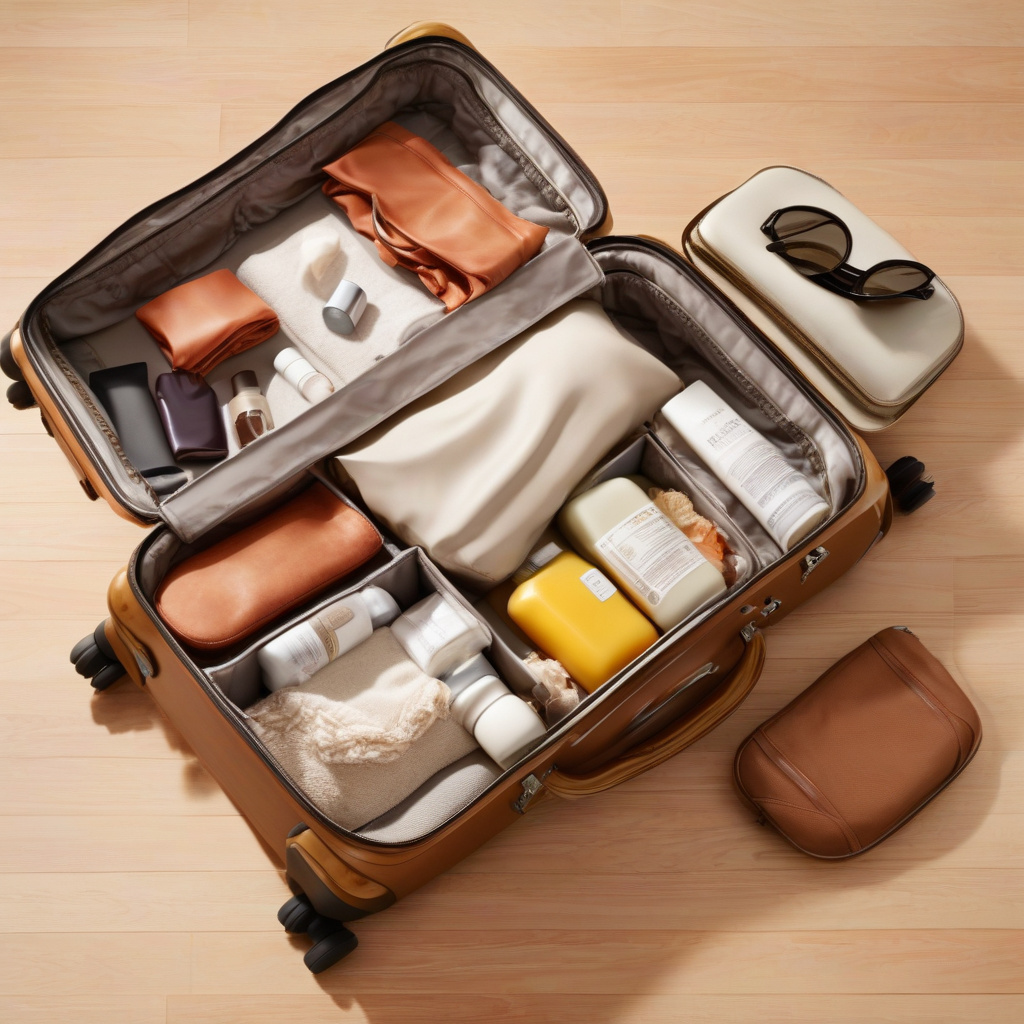Could Travel Sizes Get Sent Packing?
In an unexpected turn of events, the Transportation Security Administration (TSA) is considering the possibility of lifting its long-standing ban on full-size personal care products in carry-on luggage. This potential shift could signal the end of the travel-size bottle era, a staple in the $32 billion airport beauty business. As consumers gravitate towards convenience and sustainability, the implications of such a change could be monumental for retailers, manufacturers, and consumers alike.
For years, travelers have begrudgingly packed their toiletries in small, travel-sized containers, often leading to frustration and the risk of running out of their favorite products mid-journey. The TSA’s current regulations allow only liquids, gels, and aerosols in containers of 3.4 ounces or less, which has fueled the market for travel-size personal care products. This restriction has not only created a lucrative niche for beauty brands but has also reshaped consumer behavior, as travelers prepare for their journeys by meticulously selecting and purchasing these smaller items.
However, as the TSA re-evaluates its policies, the question arises: what will happen to the travel-size beauty market if full-size products become permissible in carry-on luggage? The implications are significant, especially in the context of the growing consumer interest in sustainability. Many travelers are increasingly conscious of their environmental footprint and are seeking to reduce waste. The production and disposal of countless travel-size containers contribute to plastic pollution, and a shift towards full-size products could align more closely with eco-friendly consumer habits.
Retailers may need to adapt quickly to this changing landscape. The travel-size market has been a significant revenue generator, and brands have invested heavily in creating appealing packaging and product lines to cater to this segment. With the potential for full-size products to take center stage, companies may need to rethink their strategies. For instance, major brands like Estée Lauder and L’Oréal have built entire collections around travel-size offerings. If these products lose their appeal, brands will need to innovate to maintain their market share.
Moreover, the airport retail experience could undergo a transformation. Duty-free shops and airport boutiques predominantly stock travel-size products, capitalizing on the needs of hurried travelers. Should the TSA permit full-size items, these retailers might need to adjust their inventories, focusing more on full-size offerings while still catering to the traditional needs of travelers who prefer the convenience of smaller bottles. This could lead to a more diverse shopping experience within airports, allowing consumers to purchase their favorite products without the constraints of size limitations.
However, it is essential to consider the potential drawbacks of the TSA’s proposed changes. The travel-size market has thrived not just on the restrictions but also on the unique opportunity to introduce consumers to new brands and products. Smaller sizes encourage trial and experimentation, making it easier for consumers to explore different options without the commitment of a full-size purchase. If full-size products take precedence, brands may lose this entry point for new customers.
The economic ramifications of such a shift are also noteworthy. In 2022, the global airport retail market was valued at approximately $32 billion, and a significant portion of this revenue comes from beauty and personal care products. If travel-size items become obsolete, retailers may experience a downturn in sales, particularly in stores that have built their reputation around catering to the travel-size market.
Additionally, the consumer experience could change dramatically. For many travelers, the convenience of grabbing a travel-size product at the airport has become a normalized part of the journey. If full-size products become more widely accepted, the ease of shopping at airports will likely remain, but it could also lead to longer lines at security as travelers navigate larger bottles of liquids. This change could disrupt the current balance of efficiency and convenience that travelers have come to expect.
In conclusion, the TSA’s potential decision to lift the ban on full-size personal care products could have far-reaching effects on the airport beauty business. While it may streamline the travel experience and cater to the growing demand for sustainability, it also risks undermining the travel-size market that has become a significant revenue source for brands and retailers. As the industry grapples with these changes, brands must remain agile and innovative, ready to adapt to a new consumer landscape that may redefine the way we think about travel-sized beauty products.
airportbeauty, travelsize, personalcare, TSA, sustainability
